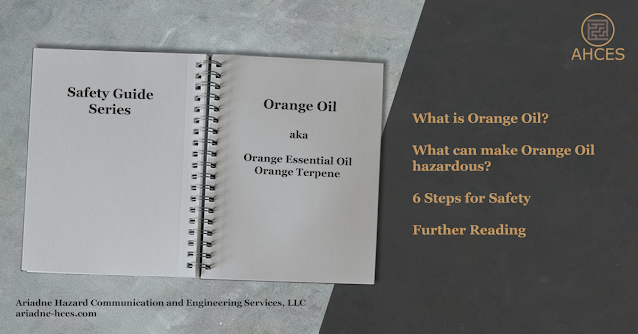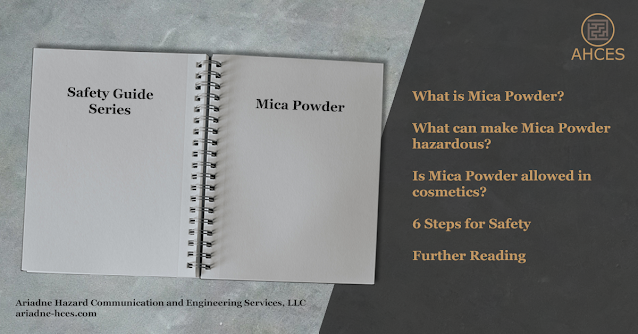Tannic Acid Safety Guide
What is Tannic Acid?
Tannic Acid, also known as gallotannin and quercotannic acid, is a type of polyphenolic acid. In most commercially available forms, it is a mixture of polygalloyl glucoses and polygalloyl quinic acid esters, with the exact composition varying by the plant source it is derived from and processing it has undergone. The most common source plants for tannic acid are C. spinosa, R. semialata, and Q. infectoria.
Tannic acid is used as a mordant in the dying process for natural fibers as well as a bleaching resistance treatment for some synthetic fibers. It also has some applications as a wood treatment for stain adherence and termite resistance.
Tannic Acid has the CAS Number 1401-55-4.
The CAS Number is used to identify tannic acid as an ingredient on safety data sheets (SDS) and other safety documentation. When looking for tannic acid as an ingredient in mordants, fabric treatments, and wood treatments, look for the CAS Number within the composition table.
Notable Properties of Tannic Acid
Pure tannic acid is a light yellow to tan solid with a faint, bitter odor, and astringent taste. Tannic acid is soluble in water and is commonly available in a liquid solution, which tends to be brown in coloration.
What Makes Tannic Acid Hazardous?
Tannic acid is a mild acid and can be irritating on contact. It can be irritating to skin, as well as the mucus membrane of the nose and throat, as well as the eyes. Ingestion can cause nausea.
Due to being a carbon-based substance, tannic acid can also form combustible dusts and create a fire hazard in its solid form.
6 Steps for Safety
Step 1: Read the Warnings
When working with a product for the first time, always read all the safety documents first. This includes safety data sheets, which should be provided by the manufacturer or importer of the tannic acid product. There may also be an OSHA chemical label or a Consumer Protection label on the packaging of the tannic acid product.
Different compositions in different products may cause additional hazards to be present beyond the properties of plain tannic acid powder. Be sure to familiarize yourself with the differences between separate tannic acid products.
For example, some wood treatment solutions use tannic acid and hexamine. Hexamine is a flammable liquid, as well as an irritant. When using a product that has both tannic acid and hexamine as the active ingredients, protections against the flammable properties of hexamine need to be considered, which are not needed for a pure tannic acid solution.
Step 2: Prepare Your Workspace
Creating a safe workspace, sometimes referred to as engineering control, is a key component of working safely with any potentially hazardous substance.
Since the primary hazard of tannic acid powder is the fine dust, both as an irritant and as a combustible dust, ventilation is important. Fans which would blow tannic acid powder around should be avoided. Dust collectors and air filters which draw in and capture any stray tannic acid powder are ideal.
Liquid tannic acid solutions have the same irritant concern, though cannot form combustible dusts. Working in a space where liquid spills can be contained is important, as well as making sure the work surface cannot absorb the tannic acid solution and potentially retain of the irritating substance. Using a spill tray, which is a shallow plastic container, is ideal for working with smaller quantities as the tray contains any spilled material. For larger quantities, having a spill kit available is important.
Step 3: Gather Your PPE
For tannic acid, you will need the following PPE.
- Respiratory Protection
- A half-facepiece respirator with filters rated for protection against fine organic dust.
- A full-facepiece respirator can serve as both respiratory protection and eye protection.
- Eye Protection
- Safety goggles which create a seal around the eyes are needed to prevent any airborne tannic acid from reaching the eyes.
- Open safety glasses, which do not have a sealing surface, will not work in preventing dust from reaching the eyes.
- Gloves
- Basic disposable gloves will prevent tannic acid from touching the skin on the hands and causing irritation.
- Long Sleeves
- Long sleeves will prevent tannic acid from touching the skin on the arms and causing irritation.
- Either a long-sleeved shirt, long-sleeved coat, or disposable sleeves will work.
- Launder any contaminated closing separately to prevent cross-contamination and inform anyone laundering the clothing of the presence of tannic acid so they can take any necessary precautions.
Step 4: Clear Your Workspace
Having a clear workspace is an important part of safety. Clutter can cause accidents and can prevent you from noticing if something has spilled.
This is also a good time to double check any engineering controls, like a dust collector, are in proper working order and no filters need to be changed out.
If you are working in a shared space, make sure anyone around you can also remain safe when you are working with tannic acid. For those working at home, this can include family members and pets.
Step 5: Do The Work
If engineering controls and PPE are used properly, working with tannic acid has minimal hazards.
If work cannot be completed in one sitting, be sure to properly seal any tannic acid containers to prevent spills or accidental release when not in use.
Step 6: Clean Up
Dust generation should be avoided when cleaning up. Either a vacuum with a filter or a damp cleaning cloth can be used to pick up spilled or stray tannic acid powder while preventing dust generation.
Be sure to dispose of any waste in accordance with local regulations, which can vary by State and county.
Further Reading
The National Library of Medicine has a PubChem article on
Tannic Acid. There
is also a CAMEO Chemicals entry on Tannic Acid.
Check out the Safety Guide Series Hub for more safety guides.
Sources Cited
National Center for Biotechnology Information (2024). PubChem Compound Summary for CID 16129778, Gallotannin. Retrieved September 27, 2023 from https://pubchem.ncbi.nlm.nih.gov/compound/Gallotannin.
National Oceanic and Atmospheric Administration (n.d.). Tannic Acid. CAMEO Chemicals. Retrieved September 27, 2023, from https://cameochemicals.noaa.gov/chemical/9104
Original Posting Date: Sept. 27, 2023
Last Updated: Feb. 12, 2024






Comments
Post a Comment